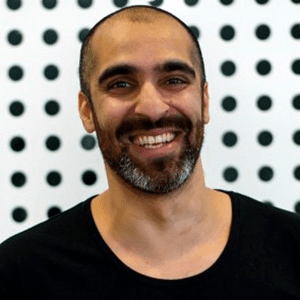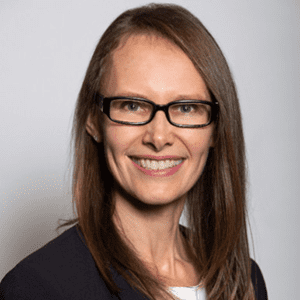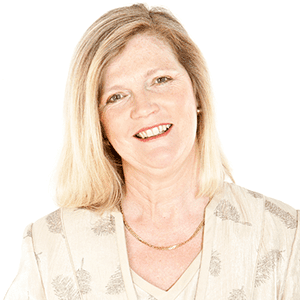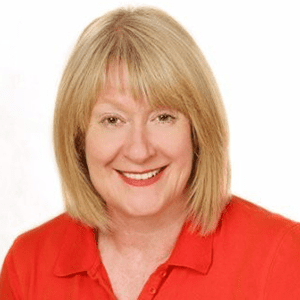

#50: Aligning your communication strategy from the ‘inside out’ in 2022
Frances Dwyer is a Marketing Communications and Strategy expert with over 19 years experience in the industry. As General Manager of The IMPACT Agency, Frances leads strategy development and high-level direction of the agency’s work; encompassing audience intelligence, behavioural insights, corporate reputation and issues management, integrated communications, traditional public relations, influencer marketing and stakeholder campaigns for consumer and corporate clients.
Frances unlocks how you can develop an effective communications strategy in a practical way that’s helpful to your target audience.
Frances covers a lot of ground in this podcast and rounds the conversation off with messaging tips to help you connect with your ideal customer, media tips, myth busting and more.
In this episode you’ll hear:
• Why it is critical for businesses of all shapes and sizes to have a communications strategy
• How the context of your business influences your businesses reputation risk and how to navigate that
• How storytelling can help develop a successful communications strategy
• Getting your message out there through owned, earned and paid media in an ever-evolving media landscape
• Watch outs and myth busting for business leaders looking to venture into reactive or proactive earned media
Stephanie: Welcome to TEC Live. Stephanie Christopher here, CEO of The Executive Connection. We connect leaders with a trusted network of people who help them succeed. And I’m thrilled to welcome to TEC Live, Frances Dwyer. Frances is the General Manager of The IMPACT Agency, an independent communications consultancy that is based in Sydney, which is part of ECCO, a worldwide network of independently owned agencies.
Frances is passionate about aligning purpose, people, and IMPACT with communications to support leaders, organisations, and brands, to shift the dial and challenge the status quo. Frances is a long-time colleague, and I’m proud to say, friend of mine. We’ve worked together for coming up for 15 years in different contexts. So Frances, welcome to TEC Live.
Frances: Thanks for having me. What a thrill.
Stephanie: What a thrill as a listener to be here, really-
Frances: Yes.
Stephanie: In the studio.
Frances: I know. It’s a bit surreal. I’m used to hearing Leah and you have your chat at the beginning of the pod and introducing very interesting and exciting people on interesting topics. And then to be considered in that…
Stephanie: In the same sphere.
Frances: There, that’s the word. To be considered in the same sphere is very flattering.
Stephanie: Well, you deserve to be here.
Frances: Thank you.
Stephanie: So the reason that we thought it would be great to talk to you is your expertise is in communications.
Frances: Mm-hmm (affirmative).
Stephanie: And you’ve worked with businesses of all sizes in good times and crises. How important is it for a business of any size to have a communication strategy?
Frances: Well, I think it’s just as critical as any other part of the business strategy. I think if you want to think about it as, how do I talk about who I am as a person, as a leader? How do I talk about who my organisation is? Often, it’s sidelined into the idea of marketing. How are we positioning ourselves? How are we selling ourselves? But at the core of communications is actually how do we articulate what we do, who we are, and why we do it?
Stephanie: And that why we do it is the important part. It’s often missing, isn’t it?
Frances: Yeah. If I think about the marketing mix more broadly, we’ve seen in recent years, a real swing towards hyper digital, hyper measurable marketing activities. And it’s like a drug that you can become addicted to as a leader because-
Stephanie: What are our numbers?
Frances: Yeah. What are our numbers?
Stephanie: What’s our spend? What are our numbers? Yeah.
Frances: What’s the quality of the leads? What are our conversions like? What are our clicks on the website? It’s all measurable. Whereas some other parts of communications, perhaps don’t have hard metrics attached to them. When we talk about reputation, it sounds very conceptual, but when your reputation is threatened, it feels very real. So often we talk about, if you are a risk averse organisation or you’re not sure what to prioritise, you could start from the point of what would a crisis look like and do I want an insurance policy against that crisis?
Stephanie: So tell me a bit about that. And of course that’s the interesting juicy story. But we see businesses so much with that. A major mining company having to walk back on its vaccine mandate. That’s a small one. Another mining company that may or may not have done something that destroyed a significant cultural icon in Australia. But what about on the smaller business scale? What kind of things could really damage your reputation and what can you about it?
Frances: Sure. Well, I think for small and medium business owners, one of the aspects you’ve been talking a lot about with some of your guests this year has been about people and retention and attraction and the great resignation that everybody’s talking about.
Stephanie: Including Prince Harry.
Frances: Yeah. That’s right. Even the Royal Family is not immune to the great resignation. So what we’re seeing is a new generation of employees emerging and they’re very much a large part of the workforce now. And they’re expecting different things from their employers. They want to see purpose, transparency, and the culture that they advertise is the one that they experience once they’re inside the four walls of the organisation. So that’s definitely one driving factor.
The other is consumers and clients voting with their feet. As we all become more aware of the environmental, social, and governance issues that are surrounding our lives and our businesses, clients and customers are making more considered and conscious choices about their purchases or who they work with or the services that they’re rendering for their businesses. So that’s another big driving force.
And I guess the third one, which in previous eras would’ve been the major driving force, is changes in regulation and reporting. That’s something that obviously affects the big end of town a lot more, maybe the big faceless multinationals, but there is that trickle down factor of setting the tone for what corporate Australia or consumer brands in Australia, what the expectations are, what the stakeholders of each business are really expecting of you.
Stephanie: So of those three, which is the biggest risk for a small business to take a reputational hit?
Frances: Mm. Well, I think it really depends on the makeup of your business. It would be hard to split them as a general rule. Certainly our business is a service-based business. So people are incredibly important to how we do what we do. So I think any service-based business would probably anchor their focus to their employees and maybe look to them as the first point of call to discuss and explore what’s important to them and how that aligns with the business and also the leader’s own values and purpose and objectives for the business.
But if your team’s a little smaller, but your business relies heavily on consumer sentiment, awareness, or the reputation of your brand’s quality, then perhaps a consumer demand would be the one that drives more. And then obviously those that work in financial services, health, aged care, et cetera, the more regulated sectors, regulation might be the primary driving force.
Stephanie: Yeah. Yeah. I can see that. So depending on the different context, there’s a bigger risk. So if you are selling your business, your product through Instagram, that’s a huge risk, isn’t it? That the comments you make or you as a person, that’s the kind of reputational risk you’re facing.
Frances: Yes. And you’ve got to think about that… That’s a really interesting example, actually, that you raise because Instagram is… Regulation has taken a little while to catch up with social media marketing, and particularly in the area of influencer marketing.
Stephanie: Yeah.
Frances: So what we’re seeing now is increased regulation from Ad Standards Australia around what you can and can’t do. You have to be very explicit about something being an ad if it’s being gifted or sponsored. And we’re seeing big fines handed out if you’re not clear about that. Even if it’s a little micro influencer with just a couple of thousand followers, really needs to be explicit. So it can be really tricky to navigate.
Stephanie: Mm okay. That’s interesting. So let’s get back to a classic, small business, whatever that is. So it’s someone who’s selling a product or a service, passionate about the product and service, passionate about their team, how do they line it all up to make sure that, as you call it, communicating from the inside out?
Frances: Sure. Well, if I reflect on how we once upon a time would’ve looked at this, we would’ve said, ‘Who is the target consumer or client? What profession are they in? What are their demographics?’ Really metrics of that individual, demographics of the individual. And then you would calibrate your message to that person or that version of a person that you imagined you were selling to. Whereas now we see greater overlap and intersection of our target audiences. Even as a small business, we have to think about the concept of candidate as a customer or candidate as a consumer and vice versa.
So if we’re thinking about that, sometimes it’s a good idea to think from the inside out when it comes to starting with your communication strategy. What is our why? Our purpose? What are our values and how do they intersect with our services and the what that we do? How can we communicate that in a way that is meaningful, that is practical and helpful to our target audiences? So if we think just about product offering and services and how we’re going to sell ourselves, I think that you can be really quickly, you can end up with category defining messages.
Stephanie: What does that mean?
Frances: So what that means is that, perhaps you’re talking about, you’ve got the best shoes and here are all the reasons.
Stephanie: Thank you. Have the best shoes.
Frances: And this is definitely on topic because Steph always has fabulous shoes on. You’ve got the best shoes and here are the reasons. It’s Italian leather. They’re handcrafted. They’re source ethically. You start to list all the, this is my resume.
Stephanie: And we’ve been in business for 15 years making these shoes.
Frances: Correct. And so what starts to happen when you focus only on the end product or the end service, is that your messages start to become just different adjectives of the same category that you compete in with your competitors. And this can’t cut through in a way that will be meaningful or disrupt someone’s thinking or shift their gaze or nudge their behaviour.
So there’s nothing wrong with those messages, but are they going to land? Are they going to have an impact in the way you want them to? And I think a lot of the businesses that I’ve had the privilege of talking to in the TEC community, are doing innovative, impressive, agile think, particularly in the last couple of years. And they’ve got interesting stories to tell that mean something to their potential customers, not just to their staff or not just to themselves. So telling stories that represent who you are, I think is just as important as telling people what you do.
Stephanie: That’s really interesting. And when you’re saying that, I’m thinking back to so many of the businesses I know and I interact with pretty well every day. And you’re right. The story’s interesting too. One of the team will say, ‘Oh, this is such an interesting leader. She’s doing X, Y, Z, and it’s not, she’s making fabulous shoes.’ Just that. Yeah, it’s really interesting.
Frances: And SME leaders are really uniquely placed, I think, when it comes to storytelling, unlike big multinational companies that may have been bought and sold and brands have moved from one company to another and the leader changes every couple of years and there’s not a real sense of continuity of who they are and origin story. SME leaders are really hands on and their own passions and purpose and objectives align with that of the business.
So there’s a really authentic story to be told and I know that word gets banded about a lot, but in this era of greater expectations from consumers and employees, they can see through inauthentic messaging and communications. So I think small to medium businesses don’t have to think about how many people can I reach. It’s what are the stories that I can tell and what are the things that are going to be interesting to the people I want to interact with, or I want to engage with my brand or my business?
Stephanie: That’s really good. So I love the reason for a strategy. I like you talking about the intersection of every part of your business, because when you are saying, ‘Start with your why and your purpose and your values,’ well, that’s how you start building your business strategy.
Frances: Exactly.
Stephanie: So that makes sense. What are my options for getting my message out there, internally and externally?
Frances: Yeah. Well, we talk about a few spheres. Owned, earned and paid is the jargon of the industry.
Stephanie: Yep.
Frances: And if we break that down, if you think about owned, they are platforms or mechanisms that your business, manages holds and has control over. So that could be your website. That could be your database. That could be physical magazines or newsletters that you produce. That could be a podcast that you create and collaborate with others on.
So owned is a really powerful place for small to medium business owners to focus their energy. They don’t have to rely upon news of the day when it comes to getting cut through in mainstream media, during a pandemic, which is, can be challenging. They don’t have to worry about the contractual…
Stephanie: Unless you’re hosting a super spreader event. That works.
Frances: That always gets you a headline or you’re visiting a lot of different barbecues shops. The other thing is, when you think about owned, is, it is another version of representing who you are. So you have a lot of creative control-
Stephanie: And every business has something owned.
Frances: Yes.
Stephanie: Even if it’s your internal email network.
Frances: That’s right.
Stephanie: Every business has owned.
Frances: Yeah. No matter how small the business, there is an owned element. So that is definitely the place to focus your energy initially as a small business leader. Because if you think about that next step when you start to talk to more external audiences, what’s the first thing they’re going to do? They’re going to check your website.
Stephanie: And you on LinkedIn.
Frances: And they’re going to check your LinkedIn profile. So if those two proof points aren’t there straight away, you’re already facing more barriers than you need to.
Stephanie: Mm. Okay. So that’s owned. Great. Tell me about earned.
Frances: So earned is what we may have called media relations once upon a time. Media coverage.
Stephanie: Boy, that was the big thing, wasn’t it?
Frances: It was.
Stephanie: That is what it was all about.
Frances: Yeah. And if I think about my career, at the beginning, it was probably about 75% media relations. And the balance was what we now call content or copywriting and events. Haven’t done those for a while.
Stephanie: No.
Frances: But media relations is no longer the focal point of an external communication strategy, it’s a part of it. It needs to be integrated with other aspects and other touchpoints for your audiences. There’s a few reasons for this. One, there’s been a huge contraction in our media landscape in Australia, and we’ve had lots and lots of journalists made redundant, lots of mergers and acquisitions and a shrinking trade media pool, which was traditionally the training ground for future mainstream commercial journalists. So there’s just less places to be seen.
The second thing is social media. It changed the game in terms of where you get your ideas and influences from. So peer to peer recommendation, word of mouth has always been the strongest part of any businesses’, particularly service-based businesses’ success. And that’s had a megaphone attached to it when you consider the power of social media.
And then the third part would be that we are seeing different expectations and needs from media and from journalists with… If you think about years ago, when you and I worked together with another business, we had a staple of really incredible senior journalists. They had a strong…
Stephanie: Incredible. And when I see them on the Insiders, I’m so proud when I say, ‘She’s interviewed me.’ I mean, amazing people that we used to work with.
Frances: They are. They’re really, really impressive. And not to discredit the incredible journalists that exist in the market today, but what’s different is you no longer have someone who has a really core niche topic that they have an incredible amount of knowledge and depth in. What you’re looking at is journalists that work five to six different rounds, plus might cover breaking news, particularly in the last few years, and so they don’t have that depth of coverage.
They no longer want to explore something to the ends and then pull apart the bits that are relevant to the audience. They want you to narrow the focus, make it super pointy, make sure it’s got sound bites. It’ll be even better if you could deliver a click bait headline in one of your quotes. So the prerogative is different. The breadth of what they have to cover is different. So the way that we package what we bring to them, we need to have more assets and… Sorry to use jargon, but basically, what visual assets do we have? Do we have video? Do we have audio? Do we have white papers? Do we have infographics? Do we have lovely images that are print ready? All of these things have always been helpful, but now to get that cut through, you’ve got to have all of those things and relevance to the masses.
So for a small business, that can feel really intimidating and they may consider, oh, that’s too difficult to compete in. That’s not necessarily the case. I think it’s about being really targeted. You don’t need to be on the front of the Sydney Morning Herald to reach your audience. That might be what you read, but really think about, what media do my target audience consume, my target customers? What do they consume regularly? What do they really absorb?
And it might be podcasts. It might be that they read a trade publication, and that that’s actually a bit of a Bible for that industry. So you’re better off focusing your energy on earning the pages in there, or if it’s ticket TV or some kind of online news streaming service, that might be the way to go. So stopping and thinking first about what does my audience consume? Not what do I consume, which can be really tricky because they can be very two different things.
Stephanie: Yeah. Yes.
Frances: Put yourself in their shoes, think about what they consume. And don’t be afraid to do a bit of desktop research, or someone in your team, to give them this task of, okay, if this is what our average customer looks like, what are they consuming? What new studies have been released that talk about how much they use social media? If we’re going to choose one platform that we’re going to invest in when moving over to paid media now, which one are we going to boost, sponsor or invest in?
Maybe you’re going to buy an advertising and advertorial feature in a trade publication because that’s a bullseye for your audience. Maybe you’re going to do a test and trial Instagram campaign or LinkedIn campaign with some gated content. You can pick and choose and trial different things, but try to start with looking at data that suggests that this is a good place to reach your audience.
Stephanie: So I love this brings us back to the wonderful Ashton Bishop and having a very clear picture of who your ideal customer is.
Frances: Absolutely.
Stephanie: Which brings it all back to the strategy all going in. So just before you get a little more into paid, let’s go back to earned. Coming up for 15 years ago, you did my media training. I remember, with that lovely journalist from Canberra.
Frances: Yes. We still work with Chris.
Stephanie: Yeah. Lovely, lovely. But one of the things I’ve learned is if… And it never happens on me, I’m proud or not proud to say, but whoever someone shops a microphone under you… Or phones you out of blue, take a moment, have a breath. Say, ‘Sorry, just doing something now. Give me five minutes. What’s the best time to call you back?’ So you get your thoughts together. What are the watchouts for a small business leader who thinks earned would be good, but finds themselves about to be interviewed or for better or worse, or could we have your comment? Something’s happened in your category? Can you give your comment right now? What do they need to do?
Frances: Great question. If you’re venturing into earned reactively or proactively, you have to remember that you are always able to be in control. So to your point, if you’re caught on the hop, you get a call out of the blue, you don’t have to answer on the spot. That whole scary sort of a current affair visual of a door stop, is really intimidating. But the reality is few actually get the camera shoved in their face. Usually it’s a phone call.
And just as journalists can be on a deadline and have no time for you, you can tactfully and appropriately just be getting in a lift or just be walking into a meeting or driving through a tunnel and say, ‘Can I grab your details? And I can get back to you as soon as possible. And what’s your deadline?’ And that’s all you need. You need contact details, deadline. If you have an internal person that helps you with marketing communication so you could create an in between, which can be really helpful as a next step, which is, they call back, ‘Oh, you were just trying to reach my leader. They’ve stepped into a lift, tunnel,’ whatever it may be.
Stephanie: Hole, a well, yeah.
Frances: ‘I know they’re going to be available shortly. I just thought I’d get in touch with you to check what it’s in regards to so they can be prepared.’ And it’s really nice to have a buffer between you that can vet the situation. Maybe do a quick search to see if anything’s broken in your industry, if anything’s been related to one of your major clients, perhaps. Do that quick scan and just understand what you are walking into. It’s okay to rely upon people around you to be that buffer. If you don’t have the luxury of someone you can rely upon like that, it’s also okay to ask, ‘Can I just check with you what it’s in regards to so I can have the right information at hand?’
Stephanie: Nice. Really good.
Frances: And that’s a completely practical thing for the journalists. Ultimately, they’re looking for a response or a comment.
Stephanie: And better response. That’s good. Thank you. That’s a great tip. And I think one other tip is, no journalists are going to show you what they write before they write it.
Frances: Never.
Stephanie: So don’t think that you get to say, ‘Send it to me and I’ll vet it.’
Frances: That’s right. And there’s also, while we’re doing the myth busting, there’s no such thing as off the record.
Stephanie: No, I know that.
Frances: Even in the chat too, and from the podcast studio.
Stephanie: I know that’s the biggest record of all. We need Leah on that… So finally, and you’ve touched on paid and I feel like we’ve talked about it in a lot of other places. It’s an opportunity and you need to be very clear on what you’re doing and why.
Frances: Yes. And again, reflecting on my career, at the beginning, I would’ve said, ‘Oh, that’s the advertising guy’s remit.’ I can’t really comment on that. That’d be their area of expertise, but these three areas are now a Venn diagram, owned, earned, and paid. They overlap in many places. You can boost and sponsor content on social, but ultimately it’s editorial in nature in the first place.
So targeted, selective and trial and error. Try different things. See what sticks. You can afford to do that. Particularly when you’re doing it from owned or social channels, you can be quite targeted in what you do. But if we come back to the beginning of our discussion and talking about communication strategy really linking to business strategy, it’s just another aspect of what you do. You look at risk, you look at culture and you look at reputation. And communication touches all three of those spheres. So it’s definitely something worth prioritising. And just start, would be my main.
Stephanie: It’s great. Really, really good messages. Just finally, internal comms with your team, thoughts or thoughts. A general question. What are the important elements of that?
Frances: Consistency.
Stephanie: Okay.
Frances: Really important.
Stephanie: Mm-hmm (affirmative).
Frances: If you’ve got a regular internal meeting, a regular internal communications newsletter, whatever mechanisms you’re using, it’s really important that they’re consistent and that your team can rely upon them. I think one-to-one and personal interaction has to be a part of the mix as well. It can’t all be one way communication and there’s an opportunity to really give employees more feedback loop opportunities.
So ask them, ‘What are the issues of importance to you? If you reflect on the last quarter or the last year, what things would you like to see more of next year?’ That stop, start, continue reflection activity, why not do it with your team, but from a communications perspective? ‘Tell us what you felt was the best way that we communicated with you this year, and what would you like to see more of?’
And I think what we are hearing more and more with the clients that we work with, is transparency, communicate early and often, they don’t want to be the last to know, they don’t want to hear something significant from an external person, and combining that with that personal aspect of the one-to-one communication, where you can.
Stephanie: Wonderful. Boy, that’s been around some of the most important elements of business strategy. Number one, you’ve earned your seat at this table, Frances, don’t doubt it. So some very, very strong messages there about integrating your whole of business approach, your strategy, and everything starts with purpose and values. And more than ever, that’s critical for your internal and your external audiences. That, being clear as always on who it is you are trying to reach, who is your ideal customer and where do they hang out, and being clear about how you can actually get to them.
And then the three things, I think the three great takeaways for our listeners in smaller, medium business, owned, earned, and paid. And I think that’s for people who are new to this area or who don’t know much about it, might think everything’s advertising. I heard someone saying the other day, ‘If I can get on the Today Show, everything’s advertising on the side of a bus that used to be told,’ but owned, earned, paid, get your head around those three. And I love consistency and transparency with your teams. Frances, that was really, really good and very, very helpful. So thank you so much for joining us on TEC Live.
Frances: Thank you. It’s been absolute pleasure chatting to you, Steph.
Stephanie: Discover more about TEC at tec.com.au



